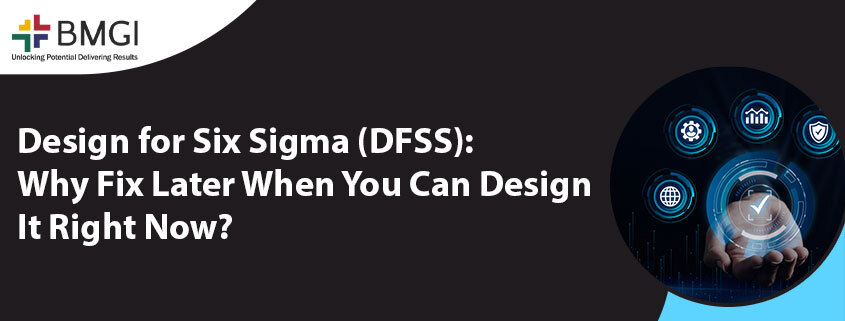Is your team still fixing problems after launch?
Many businesses pour time and resources into new products, services, or processes—only to face post-launch issues that erode customer trust, inflate costs, and delay returns. The truth is, quality cannot be retrofitted. It must be designed from the start. That’s where Design for Six Sigma (DFSS) becomes essential.
Why Traditional Design Fails
Legacy methods often rely on “inspect and correct” approaches. But in today’s high-stakes, fast-moving markets, this mindset falls short. Customers expect perfection from day one. DFSS helps organizations meet those expectations by building performance, reliability, and customer satisfaction into every design decision.
How DFSS Differs from Six Sigma
Six Sigma focuses on improving existing processes by reducing variation and defects. DFSS takes it further by proactively designing products and services to meet Six Sigma standards from the beginning.
Think of it as the difference between:
- Six Sigma: Fixing a recurring flaw in an existing machine
- DFSS: Designing a new machine that doesn’t have the flaw in the first place
The Three Pillars of DFSS
- Customer-Centric Design: Translate customer needs into measurable design targets that exceed expectations.
- Statistical Precision: Use predictive tools to analyze potential failures and prevent them.
- Prevention Over Correction: Eliminate redesigns, warranty claims, and poor user experiences by doing it right the first time.
Our Approach: The DMADV Roadmap
BMGI India applies DFSS through a proven 5-phase methodology:
- Define: Identify what success looks like for both the business and customer.
- Measure: Translate customer voice into Critical-to-Quality (CTQ) metrics.
- Analyze: Explore alternatives using simulations, risk models, and statistical tools.
- Design: Create robust solutions validated through modeling and prototyping.
- Verify: Confirm real-world performance through rigorous testing and pilots.
Where DFSS Makes a Real Difference
- New Product Development: Eliminate launch-fix-relaunch cycles.
- Service Design: Deliver consistent quality across every customer touchpoint.
- Process Design: Launch new workflows that run right the first time.
- Digital Systems: Ensure reliable, scalable platforms that meet performance targets.
Case in Point: Diagnostic Device Redesign
A healthcare equipment firm partnered with BMGI India to fix reliability issues in a core product. Using DFSS, we:
- Captured customer expectations through VOC
- Mapped failure points to CTQs
- Applied DOE and performance simulations
Results:
- 70% reduction in field failures
- 25% reduction in time to market
- Lower warranty costs and improved product reputation
Why BMGI India
- Cross-industry DFSS experience
- Deep statistical and design expertise
- Tailored approach for the Indian business context
- Focus on building internal capabilities for long-term gains
The Payoff: What Clients Achieve
- 50-80% faster design cycles
- 60-90% fewer quality issues post-launch
- 20-40% higher customer satisfaction
- Lower rework, warranty, and recall costs
Looking Ahead
If your business is designing something new—a product, a process, a service—you have one chance to get it right. DFSS is not just a quality initiative. It’s a smarter way to build what your customers actually want, without the cost of trial and error.
Design once. Succeed continuously.
Talk to BMGI India to explore how DFSS can help you deliver right the first time.
Source: https://bmgi-india.blogspot.com/2025/07/design-for-six-sigma-dfss.html
